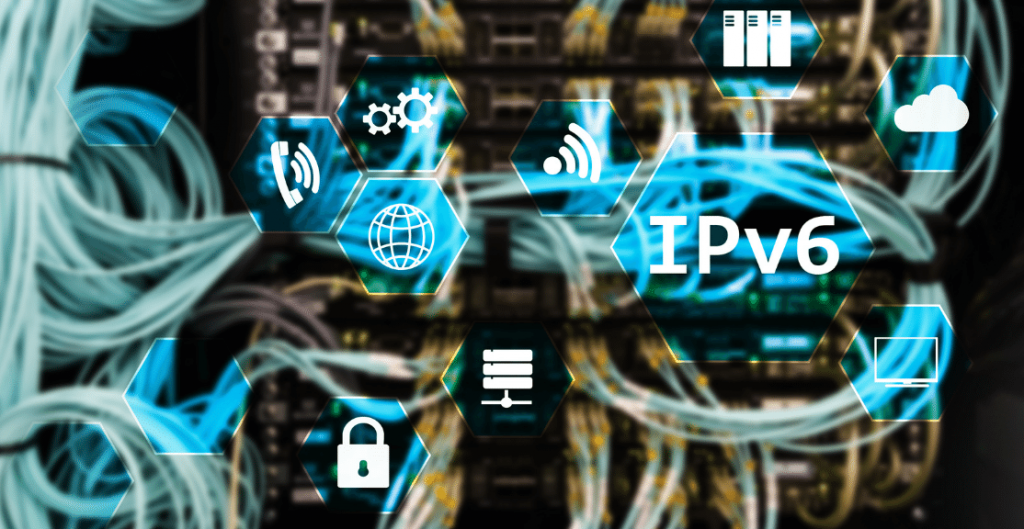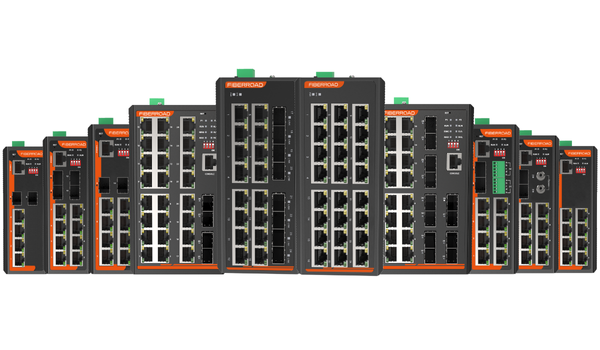By Irena Ho, Technical Writer and Editor

What is the Industrial Internet of Things?
The Industrial Internet of Things, or IIoT, is a core part of the fourth industrial revolution. It relies on devices communicating with each other to function, with the software governing how they interact. This article will discuss IIoT and its applications, focusing on IPv6 as a potential base protocol for Industrial Internet of things.
The Industrial Internet of Things (IIoT) is an acronym for the billions of physical devices worldwide that are now connected to the internet, gathering and sharing data. With the advent of cheap computer chips and widespread wireless networks, it is possible to turn any object, from a pill to an aeroplane, into a part of the IIoT.
Adding sensors to devices allows them to communicate real-time data without involving a human being. This merging of the digital and physical universes is what we call the Industrial Internet of Things, and it’s making the world around us more responsive.
How big will the Industrial Internet of Things become?
The Industrial Internet of Things will continue to expand until all things become connected.
As of 2022, technology analyst Hasan predicts that companies and automobile sectors will account for 14.4 billion devices this year. Utilities are expected to be the largest users of IIoT devices, thanks to the continued rollout of smart meters. Security devices will be the second-largest users, followed by building automation, automotive, and healthcare.
Another tech analyst, IDC, predicts that there will be 41.6 billion connected IIoT devices by 2025. Industrial and automotive equipment represents the largest opportunity for connected “things,” but smart home and wearable devices are also expected to see strong adoption soon.
The capacity of IPv4 addresses will not be able to meet the demand from the IIoT in the 2020s. “Replacing IPv4 with IPv6” for the industrial internet of things has been discussed for many years.

What is IP? What are IPv4 & IPv6? How does IPv6 differ from IPv4?
Protocols such as IP mean the rules that make it possible for our computers and other communication devices to communicate over the Internet. Whenever you open a website, your device sends a data packet with your IP address to the web server’s IP address. The website is then served back to your device over the internet.
IPv4 and IPv6 refer to the Internet Protocol’s fourth and sixth versions, respectively. The two versions currently exist side by side, and IPv6 will eventually replace IPv4 once all the IPv4 addresses have been used up.
In the beginning, IP addresses were designed to support only a small number of networks. At 232 IP addresses, the number of IPv4 addresses totals 2^32, or almost 4.3 billion. The number goes down to around four billion if some 300 million addresses reserved for multicast and private networks are excluded.
IPv4 addresses are numeric and formatted using dotted decimal notation, or four decimal octets separated by dots, e.g., 172.217.31.238. Since an octet is eight bits in length, with the four octets, each IPv4 address is 32-bits, or four bytes, long.
In 1998, concerning the problem of running out of IP addresses, IETF(the Internet Engineering Task Force) developed IPv6, which was intended to supersede IPv4 eventually.
IPv6 provides for a 128-bit IP address. This means that it allows the generation of 2^128 or approximately 3.4 × 10^38 addresses.
While IPv6 conforms to the same design principles as IPv4, IPv6 addresses come in eight groups of four hexadecimal digits, each separated by colons such as fe80:0000:0000:0350:9804:1781:4371:2d03. Most IPv6 addresses don’t occupy all their 128 bits, leading to fields that contain only zeros or get padded with zeros.
Why IPv6 is important for the Industrial Internet of Things?
Scalability
The demand for IP addresses is exploding. As the article above says, the amount of connected devices in IIoT has reached 14.4 billion since 2022. That’s an incredible estimation, considering the same report notes that 3.5 billion devices will be connected in 2015. This purported 400% increase in growth in only five years sheds some light on how much exponential IIoT growth we can expect in the next 10, 20, or even 50 years.
Given these numbers, it’s easy to understand why IPv6 (and its trillions upon new addresses) are important for IIoT devices. Creators of IIoT products connected over TCP/IP can rest assured that a unique identifier will be available for their devices for a long time.
Security
Security is an important consideration for all IIoT engineers. Hackers have become an imminent threat to organizations and individuals in recent years. However, in IIoT, new security aspects are introduced. Hacking a secure network and harvesting millions of credit card numbers is terrible-but if someone hacks into a smart city, the result could be far more disastrous. IIoT security is a very important issue. It’s good to report that IPv6 offers better security plans than IPv4.
IPv6 is capable of end-to-end encryption for a couple of reasons. Although this technology was retrofitted into IPv4, it remains an additional option that is not widely adopted. Currently, encryption and integrity checking are used as standard components in IPv6. Compatible devices and systems support these protocols. Increasing adoption of IPv6 will result in “man-in-the-middle” attacks – i.e., it is more difficult to enter a cyber “trap” than to think you’re signing
IPv6 also supports a more-secure name resolution. The Secure Neighbor Discovery protocol allows hosts to confirm each other’s identities cryptographically. More difficult are addressing resolution protocol poisoning and other naming attacks. IPv6 does not replace application- or service-layer verification but offers new levels of trust in connections. The IPv4 protocol allows an attacker to redirect traffic between legitimate hosts and manipulate the conversation or at least observe it-but IPv6 makes doing so extremely difficult.
Today, these security features depend completely on the design and implementation of IPv6 and IPv6, which is more complex and flexible. However, IPv6 networks are significantly more secure than IPv4 if properly configured.
Connectability
The importance of connecting devices to each other — or allowing network-connected devices to talk to each other — is crucial with billions of new IIoT devices entering the market every year.
IPv4 has created quite a few issues with allowing IIoT products to talk to each other. The Network Address Translation (NAT) issue was one of these major concerns. An IPv4 address shared between multiple people and devices was created as a workaround. Its security issue is a security concern and a substantial problem for IIoT products. IPv6 allows IIoT products to be uniquely addressable without working around the traditional NAT and firewall issues. While more advanced host devices have tools for managing firewalls and NAT routers, small IIoT endpoints do not. IPv6 simplifies many of these issues for TCP/IP enabled IIoT devices.

Why choose an IPv6 industrial network switch?
Remember your industrial network switches when designing a network for IPv6!
Here are some functions that will pay more attention to you:
- DHCP Snooping
- Multicast Listener Discovery (MLD) Snooping (the IPv6 equivalent of IGMP Snooping)
- Dynamic ARP Inspection (DAI)
- Quality of Service (QoS) marking for upstream Differentiated Services treatment
- Access Lists (e.g., VLAN or regular ACLs)
- Web Management
ACLs at the access layer are recommended per security requirements and hardening guidelines.
With growing deployments of IP networks, multicast and MLD Snooping are crucial to improving performance.
Additionally, the convergence of voice and high-resolution video to IP networks is furthering the need for QoS. It is best to mark traffic as close as possible to the edge.
Web Management is an essential function that allows you to check and manage the IP addresses connected to your network by a management interface.






